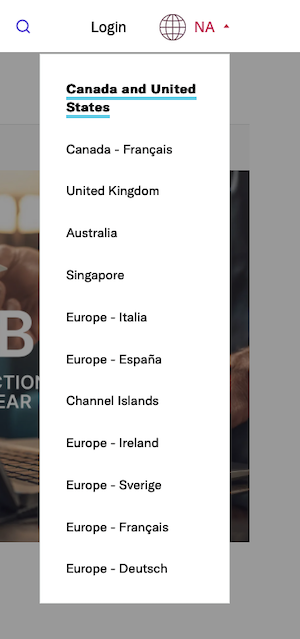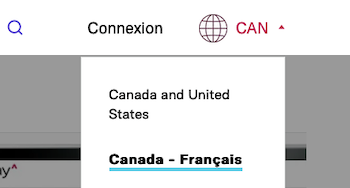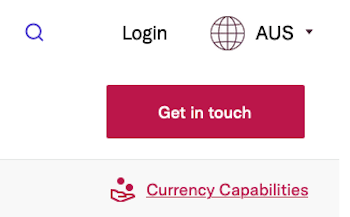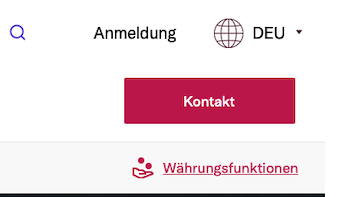When I see NA I generally think “not applicable.”
Which was why I gave the Corpay global gateway a second look when I visited recently:

Naturally, I clicked on the globe icon — which, by the way, is the perfect global gateway icon.
And here’s what I saw:

North America!
Now, I wouldn’t recommend using NA — not just because I was clueless about it — but because it’s not very scalable.
Consider the next link down, for Canada (French):

Okay, so this is the Canadian website for French speakers but English speakers in Canada have to visit the NA (merged US/Canadian) site? Perhaps the Canada (English) and US websites could have distinct links even though they take visitors to the same site. Far from perfect I realize but more user friendly I suspect — and would bypass the entire NA issue.
Onwards, here’s what Australians see:

And here is Germany:

It appears that the website was going with three-character codes for countries, except when there are regions, as in NA. This is not a standard solution.
If real estate is the issue, then I’d recommend a more standard locale-based approach as illustrated here with Cisco:

Note that Cisco includes both language code and country code, which eliminates any room for confusion over what a visitor can expect.
Now, some readers of this post might wonder how one can devote so much text to something as small as NA.
Yet it’s important to keep in mind that more than half of the visitors to most global (as in .com) websites are not native-English speakers. They might not have any idea what NA means — fortunately there is the globe icon. But the larger issue is one of global accessibility. A well-planned global gateway can make an immediate improvement to your visitor stats and your global customer experience.
For more about global gateways, check out the 2023 Web Globalization Report Card.
